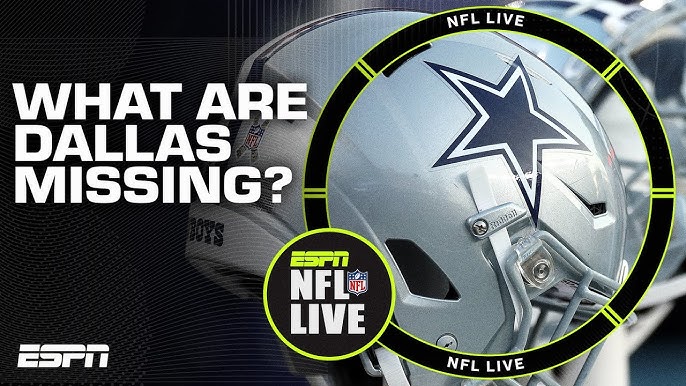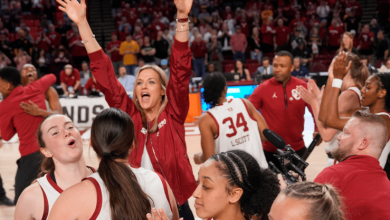Investigating the Prolonged Playoff Drought of the Dallas Cowboys

Investigating the Prolonged Playoff Drought of the Dallas Cowboys
The Dallas Cowboys have long been one of the most iconic and successful franchises in the National Football League (NFL). Boasting a storied history with five Super Bowl championships, a loyal fan base, and an undeniable influence on the sport, the Cowboys are often referred to as “America’s Team.” Their success throughout the 1970s and 1990s helped cement the franchise as one of the league’s elite. However, despite the high-profile players, historic records, and seemingly endless potential, the Cowboys have endured a prolonged playoff drought since their last Super Bowl victory in 1995.
In the years that followed, Dallas has consistently qualified for the NFL playoffs, but they have struggled to make a deep postseason run. A combination of coaching changes, roster turnover, and underperformance in key games has led to this prolonged playoff absence. The lack of success in the postseason has left fans, analysts, and even former players questioning what is behind the Cowboys’ postseason futility.
This article will investigate the key factors contributing to the Cowboys’ long playoff drought, from internal decision-making to external pressures. By analyzing team leadership, coaching, roster moves, and game-day execution, we will explore why the Cowboys have consistently fallen short of their potential despite abundant talent.
The Rise and Fall of the Cowboys’ Dynasty
To understand the prolonged playoff drought, we must first recognize the remarkable heights the Cowboys once reached. In the 1970s, under the guidance of head coach Tom Landry, the Cowboys emerged as one of the NFL’s most successful franchises. They won two Super Bowls (VI and XII) and appeared in five. Landry’s innovative defense and emphasis on disciplined, balanced offense helped the team become a perennial contender.
However, the true apex of the Cowboys’ dynasty came in the 1990s, when they were led by head coach Jimmy Johnson, quarterback Troy Aikman, running back Emmitt Smith, and wide receiver Michael Irvin. This team, known as the “Triplets,” dominated the league, winning three Super Bowls in a four-year stretch (XXVII, XXVIII, and XXX). The Cowboys were the model of consistency, blending offensive firepower with a strong defensive unit.
Despite the Cowboys’ dominance during this period, the franchise began to experience turmoil after the departure of Jimmy Johnson following the 1993 season. His relationship with Jerry Jones, the team’s owner and general manager, deteriorated, and the subsequent firing of Johnson marked the beginning of an era of instability. This instability, along with a series of coaching changes and roster shakeups, began to undermine the Cowboys’ playoff success.
The Impact of Coaching Changes
One of the most significant factors contributing to the Cowboys’ playoff struggles has been the inconsistent coaching leadership. Since the departure of Jimmy Johnson, the Cowboys have cycled through multiple head coaches, none of whom have been able to replicate Johnson’s success. The Jerry Jones era has seen several notable coaches come and go, each bringing their own philosophies and styles to the team. However, none have delivered a Super Bowl title.
Barry Switzer Era (1994–1997)
After Johnson’s departure, Jerry Jones hired Barry Switzer, the coach responsible for Oklahoma’s dominance in college football. Switzer did manage to lead the Cowboys to a Super Bowl victory in 1995, but his tenure was marred by issues such as lack of discipline and player management. Switzer’s inability to maintain the same level of excellence that Johnson had instilled in the team was apparent, and after just four seasons, he was let go.
Wade Phillips (2007–2010)
Following Switzer, the Cowboys hired Wade Phillips as head coach. Phillips had previous success as a defensive coordinator but struggled in leading a team on the national stage. Under Phillips, the Cowboys experienced some success in the regular season but failed to live up to expectations in the playoffs. One notable example was in 2007, when the Cowboys entered the postseason with the top seed in the NFC but were eliminated in the first round by the New York Giants. Despite having a talented roster, Phillips could not get the team past the first hurdle of playoff football.
Jason Garrett (2010–2019)
The longest-serving head coach of the post-Jimmy Johnson era was Jason Garrett, who took over as the Cowboys’ interim head coach in 2010 before being permanently hired in 2011. Garrett’s tenure featured an offense that showcased the talents of Tony Romo and Dez Bryant, among others, but the team was often hampered by inconsistent play and poor game management. Garrett did manage to lead the Cowboys to a few playoff appearances, including a notable victory over the Detroit Lions in 2014, but his failure to advance beyond the divisional round led to his eventual firing in 2019.
Mike McCarthy (2020–Present)
The current head coach of the Cowboys, Mike McCarthy, was brought in after a year-long search following Garrett’s departure. McCarthy, who won a Super Bowl with the Green Bay Packers in 2010, was expected to bring a winning culture and Super Bowl pedigree to Dallas. While McCarthy’s teams have been competitive, they have still failed to make a deep postseason run. In fact, the Cowboys have only won one playoff game under McCarthy, a victory over the Philadelphia Eagles in the 2020 Wild Card round.
While each of these coaches brought something to the table, they were unable to replicate the success of Jimmy Johnson’s era, leaving the Cowboys in a cycle of disappointment that continues to this day.
Front Office and Decision-Making
Beyond the coaching carousel, the leadership of Jerry Jones as both owner and general manager has been another critical factor in the Cowboys’ prolonged playoff struggles. Jerry Jones is known for his hands-on approach to team management, often making decisions about personnel, contracts, and game strategy. While his passion and desire to bring a Super Bowl to Dallas are commendable, his influence in football operations has sometimes been viewed as a hindrance to the team’s success.
Jerry Jones’ Influence
Jerry Jones’ penchant for being involved in day-to-day football operations has led to friction with coaches and players alike. His tendency to make bold personnel decisions, whether it’s signing high-profile players or parting ways with key contributors, has created instability on the roster. For instance, Jones has occasionally made high-profile decisions to bring in aging veterans or star players with questionable long-term impacts. While these moves may generate excitement initially, they have often failed to provide the desired results on the field.
Additionally, Jones’ decision to retain coaches for extended periods, even after poor performances, has raised questions about his approach to team-building. The Cowboys have had talented rosters over the years but have struggled to translate that talent into postseason success. Jones’ influence on the hiring and firing of coaches has been a constant, with the team frequently shifting philosophies and direction based on his personal preferences.
Roster Construction and Talent Evaluation
The Cowboys have, in many seasons, had one of the most talented rosters in the NFL, yet they have still fallen short in the postseason. Over the years, the team has boasted elite players like Troy Aikman, Emmitt Smith, DeMarcus Ware, Dak Prescott, and Micah Parsons, all of whom have been among the best at their respective positions. Despite having the necessary talent to compete at the highest level, the Cowboys have consistently struggled with underperforming in key games.
Quarterback Play: The Roller Coaster of Dak Prescott
One of the most significant factors in the Cowboys’ struggles has been the inconsistent quarterback play over the years. While Tony Romo was a skilled passer, he was often prone to critical mistakes in big moments. In recent years, Dak Prescott has been seen as the Cowboys’ franchise quarterback, yet his performance in the postseason has been uneven. Prescott has shown moments of brilliance but has often failed to elevate his game in crucial playoff contests.
Prescott’s struggles to find consistent success in the playoffs have led to increased scrutiny and criticism. Fans, analysts, and former players alike have often questioned whether Prescott has the mental toughness to lead the Cowboys deep into the playoffs or if the team needs to look elsewhere for leadership at the quarterback position.
The Postseason Collapse: Mental and Physical Challenges
While there is no shortage of talent on the Cowboys’ roster, there are still issues that seem to plague the team when it matters most: the postseason. Several elements have contributed to these recurring failures, including:
- Inconsistent Play Calling: Coaches have struggled to adapt to the playoff atmosphere, sometimes relying on conservative strategies that fail to exploit the opponent’s weaknesses. Mismanagement of clock situations, coupled with poor decision-making, has cost the Cowboys valuable opportunities.
- Lack of Mental Toughness: The Cowboys often fail to maintain their focus when the stakes are highest. Whether it’s a last-minute loss or failing to perform when the game is on the line, the team seems unable to rise to the occasion.
- Injury Struggles: Injuries have also been a contributing factor. Key players have often been sidelined during crucial moments, hindering the team’s ability to field its best roster in the postseason.









